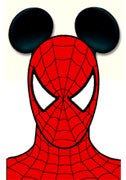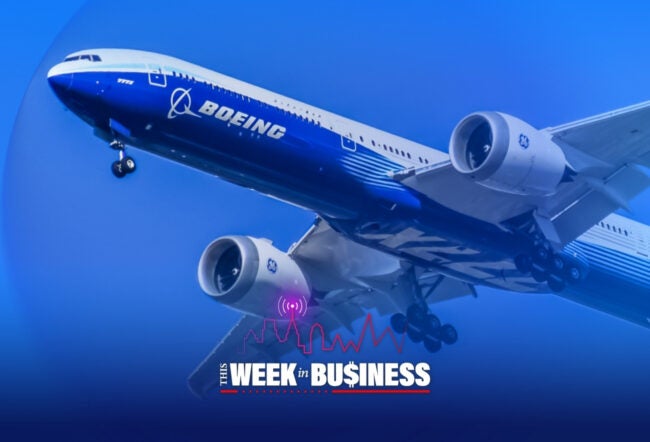Trying to picture the edgy, ultra-macho characters of Marvel Comics (like Spider-Man or the Hulk) teaming up with Walt Disney’s fairy tale princesses and cheery spokesmouse is not an easy task. Nonetheless, Wharton faculty and entertainment analysts predict Disney’s $4 billion acquisition of Marvel will overcome some major challenges and help the company enter a key market where its presence has traditionally been weak.
The merger, announced August 31, provides a fresh infusion of content into Disney’s global entertainment distribution and marketing colossus, including its signature theme parks and film studio as well as the ABC and ESPN television networks and vast consumer products offerings.
“It’s a good move when you look at what Disney has and what Marvel has,” says Wharton management professor Lawrence Hrebiniak. Marvel can claim approximately 5,000 characters, while “Disney’s strength is in marketing and cross-selling. Disney will distribute and build strategically on Marvel’s content.” In addition, Disney’s size — $38 billion in annual sales — provides enough market power and cash flow to build new business out of other characters that are as-yet undiscovered, he adds.
Besides Disney’s ability to propel Marvel characters through its many distribution outlets, Wharton marketing professor Eric Bradlow sees the addition of Marvel’s manly superheroes and villains as a way for Disney to slip instantly into a market where its presence is weak — teenage boys and young adults. The company has already enjoyed success with girl-oriented fare such as its Hannah Montana and High School Musical franchises.
Earlier this year, Disney repositioned its Toon Disney cable television channel to appeal to older boys and teenagers. Now called Disney XD, the channel offers a mix of animated and live-action entertainment that also blends into online and mobile platforms. “Marvel is a natural product-line extension into another genre,” says Bradlow. “It makes Disney the one-stop shopping place as consumers move through their lifecycle, from babies to toddlers to kids and teenagers to young adults.”
Disney’s strategy, he notes, is to build on the company’s brand equity among very young children and carry that through their lifetimes by way of theme parks, movies, television and multi-media outlets. In addition to traditional media, Bradlow points out that all companies — particularly those in the entertainment and media business, such as Disney — are stepping up their presence to market across many media channels, including the Internet and mobile devices. “Firms are recognizing they have to meet customers everywhere, all the time,” says Bradlow. To do that, he adds, requires vast amounts of content.
Wharton marketing professor Jehoshua Eliashberg agrees that the upside of the proposed merger is the addition of new properties that can be developed through Disney’s many marketing and distribution outlets. “Disney can put them, not only in theaters, but also on television and in theme parks and consumer products. That machinery, which Marvel does not have, helps get more benefit from the characters.”
The challenge for Disney, he suggests, is that the market for super heroes, developed through comic books over several generations, is more established and crowded than the market for female fare that Disney has exploited so well with such stars as The Little Mermaid and Pocahontas. Characters like Superman and Batman, which are controlled by Disney competitor Warner Bros., are already being mined for four to six major film, including sequels and prequels. “These are well-established characters. Any new character Disney will develop for Marvel will have to compete against them.”
In addition, Marvel is currently locked into licensing and development agreements with Fox, Sony and other Disney competitors for many of Marvel’s crown jewels, such as X-Men and Spider-Man. Disney is left with perhaps the lesser-known characters,” says Eliashberg. The company’s challenge is to “take the lesser known characters from a comic book and make a successful film, then capitalize on that in television and theme parks. It takes a lot of time and it’s not easy.”
Meanwhile, “if Disney decides to co-produce a movie such as X-Men, which is under a deal with Fox, there may be cultural clashes between the different filmmakers,” says Eliashberg. “My expectation is that Disney is a mighty entity, and it will want to demonstrate that it can develop characters on its own. I don’t think they will take a hands-off approach.”
No Rehab for Mickey
Wharton management professor Daniel A. Levinthal acknowledges the challenges ahead, but suggests that if any company can make unknowns into superstars, it is Disney, which he says operates like an old-time Hollywood studio developing unknown — and low-priced — talent into megastars. “Nobody ever heard of Hillary Duff or Miley Cyrus. Disney signed them as cute, perky, but unknown 14-year-olds for five- or six-year contracts, then created awareness and built a franchise around them.”
Rising Marvel characters, he says, could provide a return on Disney’s investment for years, while animated characters have an advantage over live-action stars: “Mickey Mouse doesn’t have an agent or go into drug rehab.” At the same time, Disney will need to be careful, as it integrates Marvel into its fold that it doesn’t choke off the culture of the comic book company that gave birth to the bold characters Disney now desires.
Wharton management professor Saikat Chaudhuri believes Disney’s broad strategic goal, which focuses on using Marvel’s assets to extend its reach into new markets, is sound. However, he wonders whether Disney may be paying too much for the full company when it might have been able to gain access to what it wants from Marvel through licensing or joint venture agreements.
In 2006, he notes, Disney acquired Pixar Animation Studies for $7.4 billion after they had been in a 15-year partnership to produce and distribute animation films, including Toy Story and Cars. “In general, I applaud Disney for taking some action, but I’m a little bit concerned that this is very expensive,” says Chaudhuri. “They could have tried another mode of engagement or some other partnership first. Then, if that were successful, they could move to the acquisition phase.” A full-ownership structure is better used in cases where two firms are working closely on development — for example, combining two technologies to create a new product, he adds.
According to Levinthal, however, Disney’s experience with Pixar may have influenced its decision to choose acquisition over a lesser commitment. He notes that after years of working together to develop strong brands, such as the Toy Story characters, Pixar wanted to renegotiate terms of the partnership. “It seems to me Disney had just been through a complicated relationship with Pixar, which started out as a joint venture but led to some disagreement and ended finally with Disney buying Pixar. If you are trying to develop Marvel characters and ‘Disneyfy’ them, you don’t want to be faced with the possibility of a renegotiation four or five years down the road.”
A Flagging Film Studio
Michael Morris is an analyst at UBS who follows Disney. He suggests that despite Marvel’s licensing commitments for many of its properties with other studios, Disney has numerous opportunities to build on well-established names. For example, he notes, Marvel has retained the television and global consumer rights for Spider-Man, assets that Disney is well-positioned to exploit. He also estimates that Marvel turns over as much as 25% of the revenue on consumer products to other companies which could be captured through Disney’s extensive distribution and marketing networks within a year of the deal’s completion.
Morris also argues that the addition of Marvel characters to Disney’s content war chest could help the company’s film studio, which has not kept pace with competitors. It earns, on average, $66 million per film compared to $108 million for the other five leading studios. In a report on the proposed acquisition, Morris writes: “Many of Disney’s live-action films in recent years have left something to be desired, particularly relative to the successful content in other areas of the company (animated films, ESPN, High School Musical, Hannah Montana)…. We believe the company will [retain] the same number (or perhaps fewer) live-action films on its slate, keeping enough to fully utilize studio infrastructure while increasing focus on branded, franchise characters.”
In addition, Morris says Disney will have the right to create animated films based on characters for which Marvel has signed away the live-action rights to other media companies. Other licenses will remain with third parties, according to Morris, including some video game development rights. However, he adds, the Marvel purchase makes it less likely that Disney will invest in a video game publisher in order to build its multi-media channels.
Indeed, the growing number of distribution channels presents an expanding frontier for Disney, although negotiating those agreements will be complicated, says Levinthal, adding, “I can imagine this would keep the lawyers on various sides busy.” For example, an agreement might state that a character is licensed for use in video games. What if the game is designed to be played on the Internet rather than on a standard console? “Is that the other side of the boundary or not? New media applications can raise some interesting opportunities for Disney, but I imagine the existing rights holders will make some claims.”
A Major Coup
Disney’s bid for Marvel has triggered speculation that the deal will set off a spate of other entertainment industry consolidations as rival firms feel they need to increase their scale to compete with Disney, or snap up potential partners before another firm does. “My gut reaction is that other companies, like Warner Bros., will have to jump in” and take some action, says Hrebiniak. “This is a major coup for Disney.”
While acquisitions have been less frequent as a result of last year’s financial collapse and corporate conservatism during the recession, Disney and others may be beginning to feel more optimistic about future business and willing to invest in properties before asset prices begin to rise again, says Hrebiniak. “They feel, obviously, that it’s a good time to move. Others will be scared by this, viewing it as a move that they will have to counter to check the size and capability of Disney in the future. We’ll see what Warner Bros. does — whether they push their own super heroes or do an acquisition to keep up with Disney.”



